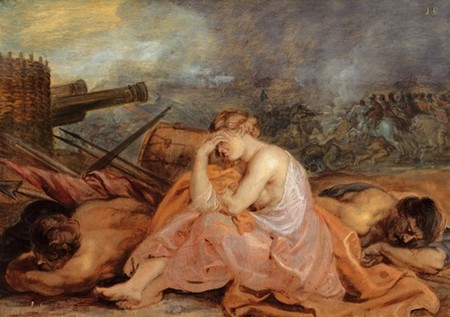A trope is a figure of speech wherein a word or phrase is used in such a way that is different from its usual or regular meaning to create a particular mental image or effect. Metaphor and simile are the two most apt examples of trope and there are several others. In literature, this figure of speech is widely used in one way or another. We can see trope in fiction, film, poetry etc. Tropes are used extensively by writers and poets in their work as these act as a powerful tool for them to convey their meanings in an implied manner. Nowadays, tropes are also widely used in the advertisements and propaganda.
The term trope is derived from a Greek word ‘tropos’ meaning ‘to turn or twist’, so it does. Tropes are used where one wants to twist the original meaning of the word or phrase to imply some hidden meanings. For instance, a novelist gives a description of a woman in his novel as a woman with hairs shining like the sun.
Metonymy
It is a figure of speech which involves the symbolic word representation or referring to something by the name of something of which it is closely related. For instance, White House is used to refer to president of United States and Westminster is used to refer to the Parliament of the United Kingdom.
Irony
Irony is a figure of speech in which the word or phrase expresses the meaning exactly opposite to its literal meaning. The term irony is derived from a Greek word that means dissimulation or feigned ignorance. Irony is largely used in literary works and considered as a rhetorical device. There are three major types of irony, i.e. verbal irony, situational irony and dramatic irony. Verbal irony is the irony where the conveyed meaning is completely contrasted to the literal meaning. Situational irony on the other hand is a type of irony in which the actions taken have an opposite effect from what is intended. Dramatic irony is the irony in which the characters exhibit their lack of capability to comprehend their own situation.
Metaphor
Metaphor is a figure of speech wherein a word or phrase denoting a thing or idea is implemented to any other word or phrase to hint some similarity between them or metaphor is a figure of speech to which describes one thing or idea in terms of other. For instance, she has a heart of stone or her eyes were glistening jewels.
Synecdoche
Synecdoche is a figure of speech in which a part of something is used to represent the whole or a whole is used to represent the part of something. Other used of the synecdoche include:
- A specific class of thing is used to refer to a larger, more general class.
- A general class of thing is used to refer to a smaller, more specific class.
- A material is used to refer to an object composed of that material.
- A container is used to refer to its contents.
Synecdoche is an important figure of speech which is widely used by the literary people especially to represent their characters in terms of some characteristic features rather than calling them by name like eyes or hairs etc.
Antanaclasis
It is a figure of speech in which a key word is repeated again and again where the same word implies for different or contrary meanings each time. For instance, if we do not hang together, we will hang separately.
The use of anatanaclasis is very effective to make some striking effect on the listeners or readers. It is used to attract the attention of the listeners or readers to think twice before making any conclusion about the statement.
Allegory
Allegory is a figurative mode of representation in which the meanings are conveyed in a way that they are completely opposite to the literal meaning. In fact, allegory is symbolic representation, figures or actions representing an idea or quality such as truth, evil death etc. In allegory, the characters are personified where they represent abstract ideas like charity, greed, envy and so on. If we talk about allegory as a literary device, it is considered as an extended form of metaphor. If we take it as an artistic device, it is taken as a visual symbolic representation.
Allegory generally conveys two meaning, i.e. one is its literal meaning and the other is symbolic meaning. It is not always necessary that each fiction with general application is an allegory. It may not be an allegory all the time.

